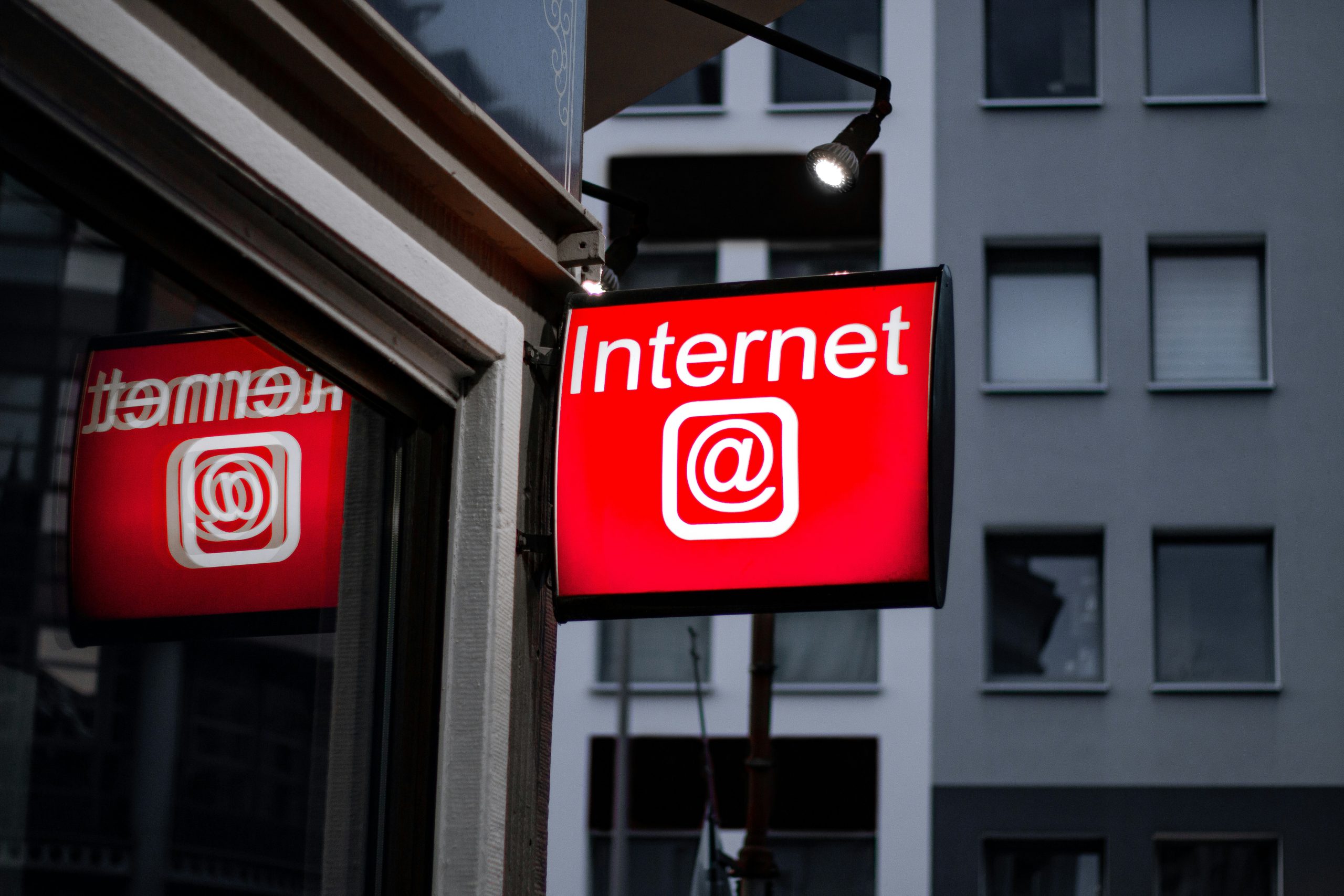Imagine being able to check the contents of your fridge from the grocery store, or even receive notifications when your favorite snacks are running low. With the rise of smart technology, connecting everyday appliances to the internet has become a reality, including the humble fridge. But how exactly does a smart fridge connect to the internet? In this article, we will explore the fascinating world of smart fridges and the various methods they use to stay connected in our ever-evolving digital age. Get ready to be amazed by the wonders of modern technology!

Wi-Fi Connectivity
Setup Process
Setting up Wi-Fi connectivity on your smart fridge is a relatively simple process. Start by ensuring that your fridge is placed within the range of your home’s Wi-Fi signal. Next, turn on your fridge and navigate to the settings menu. Look for the Wi-Fi settings option and select it. You will then be prompted to search for available Wi-Fi networks.
Connecting to a Wi-Fi Network
Once you have entered the Wi-Fi settings on your smart fridge, it will display a list of available Wi-Fi networks in your vicinity. Select your home network from the list and enter the password if required. Your fridge will then attempt to connect to the network. Once connected, you will see a confirmation message or a status indicator showing that your fridge is connected to the Wi-Fi network.
Security Measures
To ensure the security of your smart fridge’s Wi-Fi connection, it is important to take certain security measures. Firstly, make sure to use a strong and unique password for your home network to prevent unauthorized access. Additionally, enable WPA2 encryption on your router to secure the connection. Keep your router’s firmware up to date to ensure any security vulnerabilities are patched. Regularly change your Wi-Fi password to further strengthen the security of your smart fridge’s connection.
Ethernet Connection
Hardware Requirements
If you prefer a more reliable and stable internet connection for your smart fridge, you can opt for an Ethernet connection. To set up an Ethernet connection, you will need two main hardware components – an Ethernet cable and a router with an available Ethernet port. Ensure that your smart fridge has an Ethernet port as well, as not all models may have this feature.
Connecting to a Router
To connect your smart fridge to the internet via Ethernet, begin by locating the Ethernet port on the back of your fridge. Connect one end of the Ethernet cable to this port. The other end of the cable should be connected to the Ethernet port on your router. Once the cable is securely connected, your smart fridge should automatically detect the Ethernet connection and establish internet access.
Benefits of Ethernet Connection
An Ethernet connection offers several advantages over Wi-Fi. Firstly, it provides a more stable and reliable connection, reducing the chances of connectivity issues. Ethernet connections also tend to be faster, ensuring smooth and uninterrupted operation of your smart fridge. Additionally, an Ethernet connection can be more secure as it eliminates the risk of unauthorized access common with wireless networks.
Bluetooth Pairing
Pairing Process
Bluetooth pairing allows your smart fridge to connect wirelessly to other Bluetooth-enabled devices, such as your smartphone or tablet. To pair your devices, start by enabling Bluetooth on both your smart fridge and your smartphone. On your smart fridge, navigate to the Bluetooth settings and activate the pairing mode. On your smartphone, go to the Bluetooth settings and scan for available devices. Once your smart fridge appears in the list, select it to initiate the pairing process. Follow any on-screen prompts to complete the pairing.
Benefits and Limitations of Bluetooth
Bluetooth pairing offers various benefits when it comes to smart fridge connectivity. It enables you to control and monitor your fridge remotely using your smartphone or tablet. You can adjust temperature settings, check inventory, and even receive notifications about expiry dates or low stock. However, it is worth noting that Bluetooth has limited range compared to Wi-Fi, so you need to remain within close proximity of your smart fridge for a stable connection.
Mobile App Integration
Downloading and Installing the App
To fully utilize the capabilities of your smart fridge, you will need to download and install the corresponding mobile app. The app can usually be found in your device’s app store. Search for the app by its name, provided by the manufacturer of your smart fridge. Once you find the app, tap on the “Download” or “Install” button. After the installation is complete, the app will appear on your device’s home screen.
Device Registration
After installing the app, you will need to register your smart fridge with the app. Open the app and follow the on-screen instructions to create an account or log in if you already have one. Once logged in, the app will guide you through the process of registering your smart fridge. This usually involves scanning a QR code on the fridge or entering a unique identifier to link the device to your account.
Remote Control and Monitoring
Once your smart fridge is successfully registered with the mobile app, you can enjoy the convenience of remote control and monitoring. The app will provide you with a user-friendly interface where you can access various features and settings. From anywhere with an internet connection, you can adjust temperature settings, view the contents of your fridge, create shopping lists, and even receive alerts about important updates or issues.

Cloud Services
Data Synchronization
Cloud services play a crucial role in enhancing the functionality of smart fridges. Through data synchronization, your smart fridge can securely store and update information about its contents, temperature logs, and other essential data in the cloud. This ensures that your data remains accessible and backed up, even in the event of a power outage or device malfunction. Synchronization allows you to access the latest information from any device connected to the cloud service.
Real-time Updates
One of the main advantages of cloud services for smart fridges is the ability to receive real-time updates. With a stable internet connection, your smart fridge can communicate with the cloud service to provide you with accurate information about the status of your fridge. This includes real-time temperature monitoring, expiration date notifications, and alerts for maintenance or potential issues. Real-time updates enable you to stay informed and make timely decisions regarding your food storage.
Integration with Other Smart Devices
Cloud services also allow for seamless integration between your smart fridge and other smart devices in your home. By leveraging the power of the cloud, you can connect your fridge with voice assistants, home automation systems, or other smart appliances. This integration offers enhanced convenience and control, allowing you to create personalized routines, voice commands, or automation triggers based on the information gathered from your smart fridge.
Smart Hub Integration
Compatibility with Smart Hubs
If you own a smart hub, such as Amazon Echo or Google Home, you can further enhance the capabilities of your smart fridge. Many smart fridges are designed to be compatible with popular smart hubs, allowing for seamless integration. Check the specifications of your smart fridge to ensure compatibility with your chosen smart hub. Once connected, you can control and monitor your fridge using voice commands or through your smart hub’s dedicated app.
Benefits of Integration
Integrating your smart fridge with a smart hub offers several benefits. Firstly, it provides a centralized control hub for all your smart home devices, making management and monitoring easier. With voice commands, you can ask your smart hub to perform tasks such as checking the fridge’s inventory or adjusting the temperature. Integration also allows for greater customization, as you can create routines or automate specific actions based on your preferences and lifestyle.

Automatic Firmware Updates
Importance of Firmware Updates
Firmware updates are essential for the optimal performance and security of your smart fridge. Manufacturers periodically release firmware updates to address bugs, improve functionality, and patch any security vulnerabilities that may arise. These updates also ensure compatibility with new technologies and standards. Keeping your fridge’s firmware up to date guarantees that you benefit from the latest features, enhancements, and security measures provided by the manufacturer.
Process and Frequency
Smart fridges can receive firmware updates automatically or manually, depending on the manufacturer and model. Automatic updates involve the fridge checking for updates periodically and downloading and installing them without your intervention. Manual updates require you to initiate the update process through your fridge’s settings or the associated mobile app. The frequency of firmware updates varies by manufacturer, but it is recommended to check for updates every few months to ensure optimal performance.
Voice Assistant Integration
Connecting with Voice Assistants
Voice assistants like Amazon Alexa, Google Assistant, or Apple Siri can be integrated with your smart fridge to enable hands-free control and interaction. To connect your fridge with your preferred voice assistant, ensure that both the assistant and the smart fridge are compatible. Consult the manufacturer’s instructions or the voice assistant’s app for detailed steps on how to establish the connection. This usually involves linking your smart fridge account with the voice assistant account.
Voice Commands and Control
Once the connection between your smart fridge and the voice assistant is established, you can start using voice commands to control and interact with your fridge. Simply wake up your voice assistant by using the trigger phrase, then issue commands such as “What’s in my fridge?”, “Set the temperature to 35 degrees”, or “Notify me when I’m running low on milk.” The voice assistant will relay your commands to the smart fridge, giving you hands-free control and convenience in managing your food storage.
Encryption and Privacy
Data Encryption Protocols
To ensure the security and privacy of your smart fridge’s data, manufacturers implement encryption protocols. One of the common encryption protocols used is Transport Layer Security (TLS). TLS encrypts the data transmitted between your smart fridge and the cloud service, protecting it from unauthorized access. By employing strong encryption algorithms, manufacturers ensure that your personal information and fridge data remain safe and secure.
Privacy Concerns and Protection
While encryption protocols provide a certain level of security, it is important to be aware of potential privacy concerns and take steps to protect your information. Always review the privacy policy provided by the manufacturer to understand how your data is collected, used, and shared. Opt for reputable brands that prioritize user privacy and security. Additionally, regularly update your smart fridge’s software, as firmware updates often include security patches that address newly discovered vulnerabilities.
Troubleshooting
Common Connection Issues
Despite the convenience of smart fridge connectivity, you may encounter certain connection issues. Some common problems include weak Wi-Fi signals, incompatible routers, or software glitches. If you experience connection problems, ensure that your Wi-Fi signal is strong and your smart fridge is within range. Check for any firmware updates or compatibility issues with your router. Restarting your router or smart fridge can also help resolve temporary connection issues.
Resetting Network Settings
If you continue to encounter connectivity issues, you may consider resetting the network settings on your smart fridge. This can help clear any temporary configuration issues or conflicts. Refer to the manufacturer’s instructions on how to reset the network settings of your particular smart fridge model. After performing the reset, you will need to reconnect your fridge to the Wi-Fi or Ethernet network following the initial setup process.
Tech Support and Resources
If you are unable to resolve your smart fridge’s connection issues on your own, it is advisable to seek technical support from the manufacturer or authorized service centers. You can reach out to the manufacturer’s customer support via phone, email, or live chat for assistance. Be prepared to provide them with detailed information about the specific issue and any troubleshooting steps you have already taken. In addition, manufacturers often provide online resources such as FAQs, user manuals, and knowledge bases that may contain relevant information to help troubleshoot specific connection issues.



